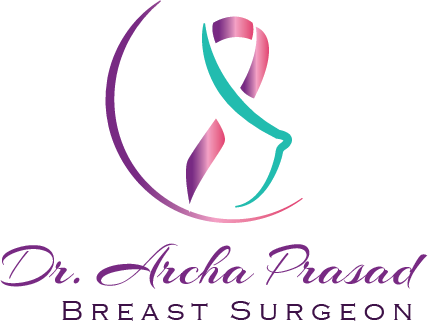Introduction:
In recent years, fat grafting has emerged as a revolutionary technique in both aesthetic and reconstructive surgery. This innovative procedure, which involves harvesting fat from one part of the body and injecting it into another, has gained widespread popularity due to its versatility and natural results. Fat grafting not only helps enhance physical appearance but also plays a pivotal role in reconstructive surgery, particularly for women recovering from breast cancer. In this blog, we will explore the magic of fat grafting, covering its applications in aesthetic procedures, reconstructive surgery, and breast enhancement.
Understanding Fat Grafting
Fat grafting, also known as fat transfer, is a surgical procedure in which excess fat is removed from areas such as the abdomen, thighs, or buttocks, purified, and then re-injected into areas requiring volume enhancement. This technique offers a natural, biocompatible solution to add volume and shape to various parts of the body, including the face, hands, and breasts. Since it uses the patient’s own fat, the results often appear more natural compared to synthetic implants or fillers, and the risk of allergic reactions is significantly reduced.
The appeal of fat grafting lies in its dual benefits—removing unwanted fat from areas where it is abundant and using it to enhance areas that require volume. This makes fat grafting an attractive option for those seeking a more natural approach to aesthetic surgery.
Fat Grafting in Aesthetic Surgery
One of the primary uses of fat grafting is in aesthetic surgery. Aesthetic procedures often aim to rejuvenate and reshape the body, and fat grafting has proven to be a valuable tool in achieving these goals. In facial rejuvenation, for instance, fat transfer can restore youthful contours by filling in areas that have lost volume due to ageing, such as hollow cheeks, sunken temples, and thinning lips. Unlike synthetic fillers, fat grafting offers longer-lasting results since the transferred fat integrates with the existing tissue.
Additionally, fat grafting is frequently used in body contouring procedures. Patients who desire a more sculpted figure can benefit from fat removal in areas like the abdomen or thighs, followed by fat transfer to enhance curves in the buttocks, hips, or breasts. The versatility of fat grafting allows for highly customised results, with patients achieving a more harmonious and natural-looking body shape.
Fat Transfer to Breast: A Natural Enhancement
One of the most popular applications of fat grafting in aesthetic surgery is fat transfer to the breast. Many women seek breast enhancement but prefer a more subtle, natural result compared to traditional breast implants. Fat transfer to the breast offers a way to increase breast size while maintaining a soft, natural look and feel.
This procedure is ideal for women who desire a moderate increase in volume without the use of synthetic implants. Additionally, it can be combined with other breast surgeries, such as a breast lift, to restore both volume and shape. For those interested in reconstruction after mastectomy, breast fat transfer provides an excellent option for achieving a natural breast contour after cancer treatment.
When considering breast fat transfer cost, it’s important to factor in the complexity of the procedure. The cost typically includes fees for the surgeon, anesthesia, and facility, and may vary depending on the amount of fat being harvested and transferred. However, for many women, the investment in fat grafting is worthwhile due to the natural and lasting results.
The Role of Fat Grafting in Reconstructive Surgery
Beyond aesthetic surgery, fat grafting plays a critical role in reconstructive surgery, particularly in breast reconstruction after mastectomy. For women who have undergone mastectomy or lumpectomy as part of breast cancer treatment, fat grafting offers a natural method to rebuild the breast. In some cases, it is used in conjunction with breast implants to enhance the contour and smooth out any irregularities, while in other cases, it is used as a standalone method for breast reconstruction.
Fat grafting provides several benefits in reconstructive surgery. First, it offers a natural solution, as it uses the patient’s own tissue, which is biocompatible and integrates well with the surrounding tissue. This reduces the risk of complications, such as implant rejection or capsular contracture, which can occur with synthetic implants. Second, fat grafting allows for the creation of a more natural breast shape and feel, offering a better match to the patient’s body than traditional reconstruction methods.
Additionally, fat grafting can address radiation damage, which often causes scarring, thinning of the skin, and loss of volume in the breast area. By injecting fat into these areas, surgeons can improve the texture and elasticity of the skin, offering not only aesthetic benefits but also improved comfort for the patient.
The Process of Fat Grafting
The process of fat grafting begins with liposuction, where fat is harvested from areas of the body with excess fat, such as the abdomen, flanks, or thighs. This fat is then purified to remove any impurities, such as blood or oil. Once purified, the fat is carefully injected into the area that requires augmentation or reconstruction.
The results of fat grafting are often immediate, although it’s important to note that some of the transferred fat may be reabsorbed by the body over time. Typically, surgeons will overfill the treated area slightly to account for this natural reabsorption. For some patients, additional sessions may be necessary to achieve the desired volume and contour. However, once the fat integrates into the existing tissue, the results can be long-lasting.
The Cost and Considerations
When discussing breast fat transfer cost or the cost of fat grafting for other areas, it’s important to consider several factors. The cost can vary based on the surgeon’s expertise, the geographical location of the clinic, and the complexity of the procedure. On average, fat grafting may be more expensive than synthetic fillers or implants, but it offers the added benefit of body contouring through fat removal.
Another important consideration is that fat grafting is a highly specialized procedure that requires the expertise of a qualified surgeon. Patients should seek out a board-certified plastic surgeon with experience in fat grafting to ensure the best possible results.
Conclusion: The Magic of Fat Grafting
Fat grafting has transformed both aesthetic and reconstructive surgery, offering patients a natural, versatile, and long-lasting solution for volume enhancement. Whether it’s used for facial rejuvenation, fat transfer to the breast, or reconstruction after mastectomy, fat grafting provides results that are tailored to each patient’s needs and preferences.
With its ability to remove unwanted fat from one area and use it to enhance another, fat grafting truly offers a comprehensive approach to aesthetic surgery. While the breast fat transfer cost and other expenses may vary, the benefits of this procedure in terms of natural results, improved self-confidence, and enhanced comfort make it an increasingly popular choice for patients around the world.


